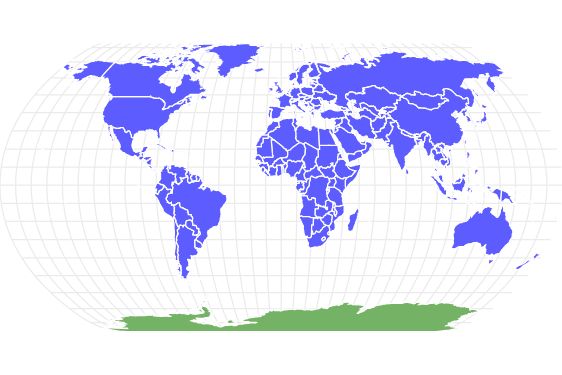Rodents
The capybara, the world’s largest rodent, likes to be in and around bodies of water. Because of this, the Catholic Church in South America decided that it was a fish, and people were allowed to eat it during Lent and First Fridays.
Advertisement
Rodents Scientific Classification
Read our Complete Guide to Classification of Animals.
Rodents Conservation Status
Rodents Facts
- Prey
- Small invertebrates, small mammals, birds, fish
- Name Of Young
- Pups, pinkies, kittens
- Group Behavior
- Social
- Fun Fact
- The capybara, the world’s largest rodent, likes to be in and around bodies of water. Because of this, the Catholic Church in South America decided that it was a fish, and people were allowed to eat it during Lent and First Fridays.
- Estimated Population Size
- Billions, though some rodents are endangered.
- Biggest Threat
- Humans, habitat destruction, climate change
- Most Distinctive Feature
- The ever-growing incisors that define them.
- Other Name(s)
- Sewellel (mountain beaver); groundpig, whistlepig (groundhog); chigüiro, fercho (capybara); street rat, sewer rat, wharf rat (brown rat); votsotsa (Malagasy giant rat); coypu (nutria); fat dormouse (edible dormouse); cavy (guinea pig); sand puppy (naked mole-rat).
- Gestation Period
- 16 days (hamster) to 205 to 217 days (North American porcupine)
- Litter Size
- Two (capybara, which only breeds once a year) to 14 (brown rat, which can breed seven times a year).
- Habitat
- Every type of habitat but Antarctica
- Predators
- Cats, birds of prey, jaguars, snakes, caimans, humans, dogs, lizards
- Diet
- Omnivore
- Type
- Rodent
- Common Name
- Rats, mice, porcupines, guinea pigs, capybaras, hamsters, gerbils, squirrels, etc.
- Number Of Species
- 2277
- Location
- Worldwide
- Group
- A group of hamsters, gerbils or mice is a horde. A group of mice or rats can also be a mischief. A group of squirrels is a dray, a group of prairie dogs is a coterie or a town, and a group of beavers is a colony.
Rodents Physical Characteristics
- Color
- Brown
- Grey
- Black
- White
- Skin Type
- Fur
- Top Speed
- 22 mph
- Lifespan
- Six months (Muller’s Giant Sunda Rat) to 32 years (naked mole rat)
- Weight
- 0.11 ounces (pygmy jerboa) to 146 pounds (capybara)
- Height
- Up to 20 to 24 inches high at the shoulder (capybara)
- Length
- 2 inches (pygmy jerboa) to 4.4 feet (capybara)
- Age of Sexual Maturity
- 5 weeks (house mouse) to 18 months (capybara)
- Age of Weaning
- 3 weeks (house mouse) to 3 months (capybara)
View all of the Rodents images!
“Forty percent of all mammals are rodents!”
Rodents are among the most successful animals on earth. Much of this is because of the ferocious reproductive rate of many rodents. The brown rat, for example, can breed seven times a year and produce as many as 14 kittens per litter. Rodents are highly adaptable when it comes to habitat and are found everywhere save Antarctica. Though most are herbivores, they will enlarge their diet to include animal protein if they must, and they are intelligent. Read on for more information about rodents
4 Incredible Rodent Facts!
- Rodents lack canine teeth. Where their canine teeth should be is a gap called a diastema between their incisors and their cheek teeth.
- Rodents were the only placental mammals to live in Australia until humans arrived.
- The African spiny mouse can regenerate its tail if it’s broken off.
- Rodents such as chipmunks and hamsters have cheek pouches to store food. When the pouches are full, they can be several times the size of the animal’s head.
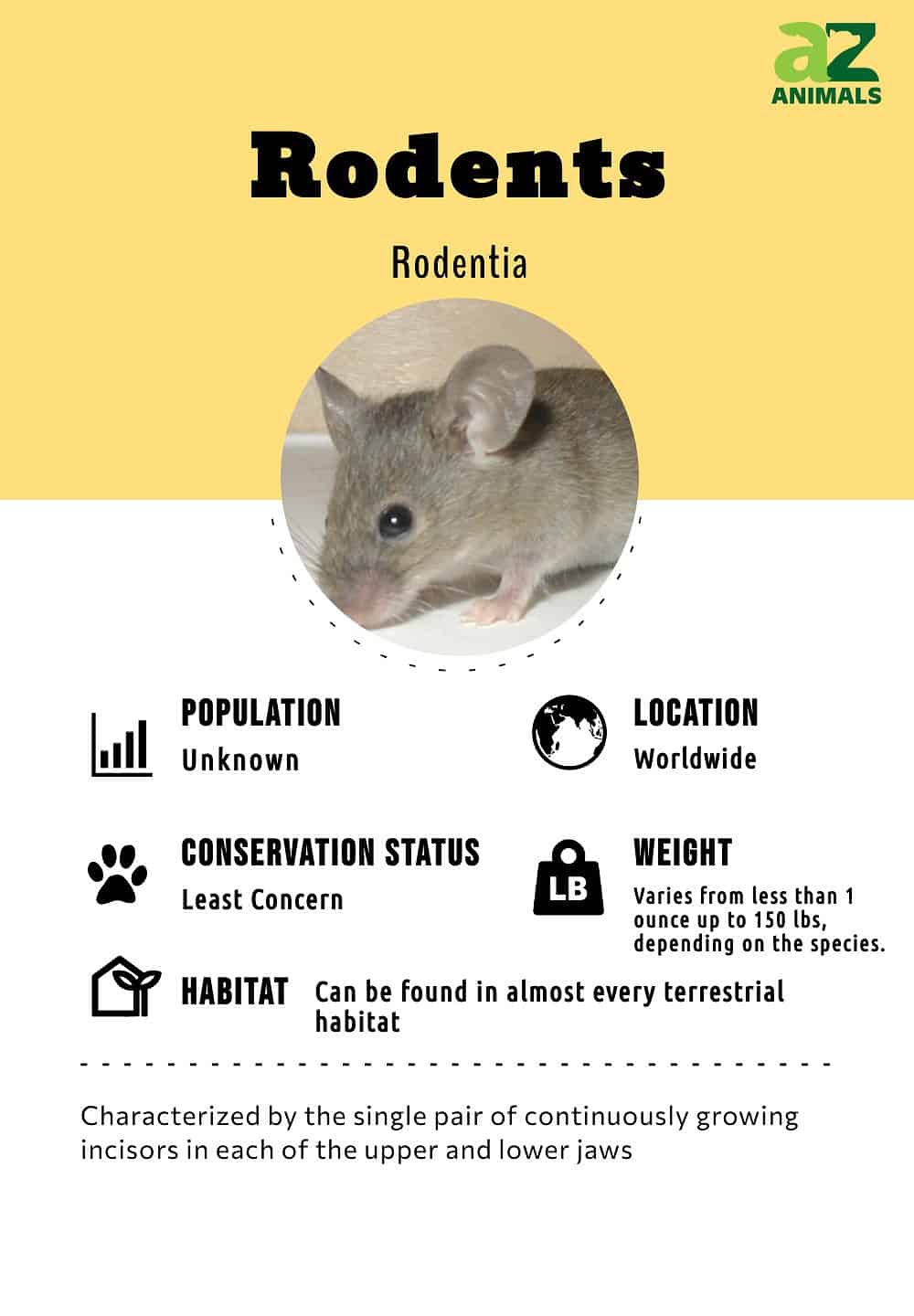
Scientific Name
The scientific name for rodents is Rodentia. Rodent comes from the Latin word rodere, which means “to gnaw,” and gnawing is a lot of what this otherwise diverse group of animals does. They have to gnaw and chew because their incisors, unlike the incisors of most other mammals, don’t stop growing. These incisors are open-rooted and must be continually worn down. In some rodents, the molars are rootless and also keep growing if they’re not worn down. The gnawing is helped by masseter muscles in the animal’s jaw that allows it to use its incisors much like chisels. How the masseter muscles are arranged in the rodent’s lower jaw depends on the species of rodent.
Evolution And History
It is believed that rodents first evolved over 100 million years ago, from a common ancestor with hares and rabbits (lagomorphs), and formed the grand order of Glires, which includes rodents and lagomorphs. Due to their small size, short breeding cycles, and ability to eat almost anything available, rodents were able to adapt to nearly all environments and quickly became one of the most successful groups of mammals.
Types Of
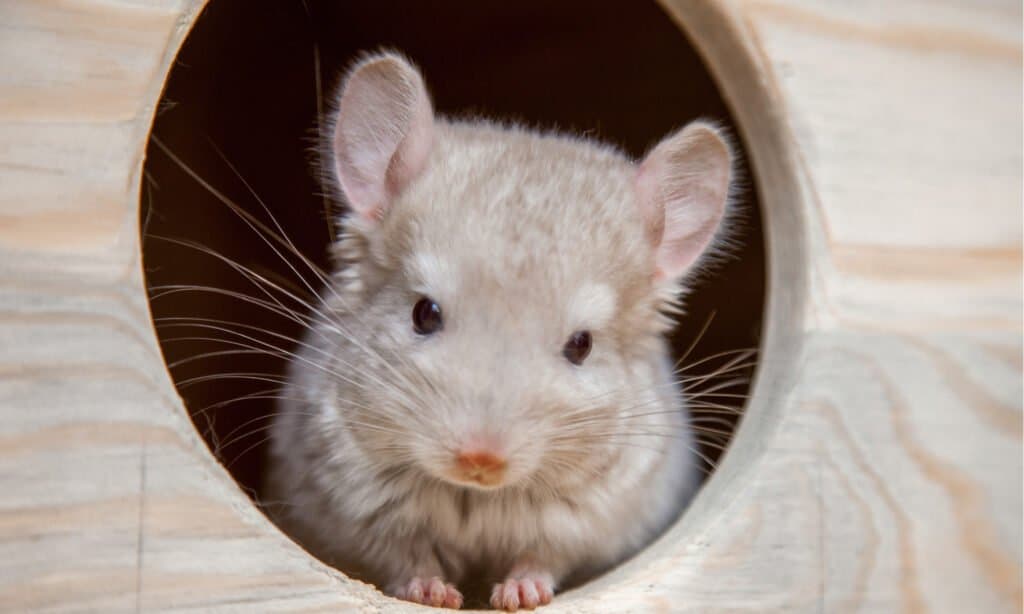
Small fluffy chinchilla is a rodent with thick, luxurious fur.
©Luniaka Maria/Shutterstock.com
Other than belonging to the Rodentia order, rodents are classified into a myriad of suborders, infraorders, parorders, superfamilies, families, and genera that encompass 2277 species. Some rodents include:
Chinchillas (Chinchilla genus)
Chinchillas, prized for their thick, luxurious fur, are rodents with rootless molars as well as open-rooted incisors. They are native to South America.
Beavers (Castor genus)
This large rodent of Europe and North America has such skill at building lodges, dams, and canals that it’s called an ecosystem engineer. It is adapted for swimming and has a nictitating membrane that protects its eyes underwater, webbed feet, and a water-repellent coat. It can also close its mouth behind its front incisors and gnaw underwater.
Patagonian Mara (Dolichotis patagonum)
This rodent looks like a cross between a rabbit and a deer. It has long, slender legs, long ears, and a short tail. It is also unusual in that males and females mate for life. It’s found in the pampas of Argentina.
Guinea Pigs (Cavia porcellus)
The guinea pig is another rodent that has rootless, ever-growing molars as well as incisors. Native to South America, the guinea pig is often kept as a pet. It has a plump body, a large head with a blunt snout, short legs, and, unlike most rodents, no tail. Guinea pig pups are all but independent shortly after birth.
Giant Flying Squirrel (Petaurista genus)
This large squirrel, which has a body length of 12 to 18 inches, doesn’t really fly, but glides. It does this by stretching out a membrane between its limbs. This allows it to glide an impressive 1310 feet between the trees. It’s found in the coniferous forests of southern Asia.
Appearance
Though rodents have different appearances depending on their genera and species, the basic rodent body plan is a smallish, compact, furry, four-limbed animal with little claws and a long tail that may be furred as in squirrels or naked as in rats. They tend to have long whiskers and acute senses that help them navigate their environment even in darkness. What all rodents have, and what makes them rodents, are four long, open-rooted incisors that never stop growing during the animal’s lifetime. Because of this, the rodent must keep gnawing and has masseter muscles in the jaw built especially for this purpose.
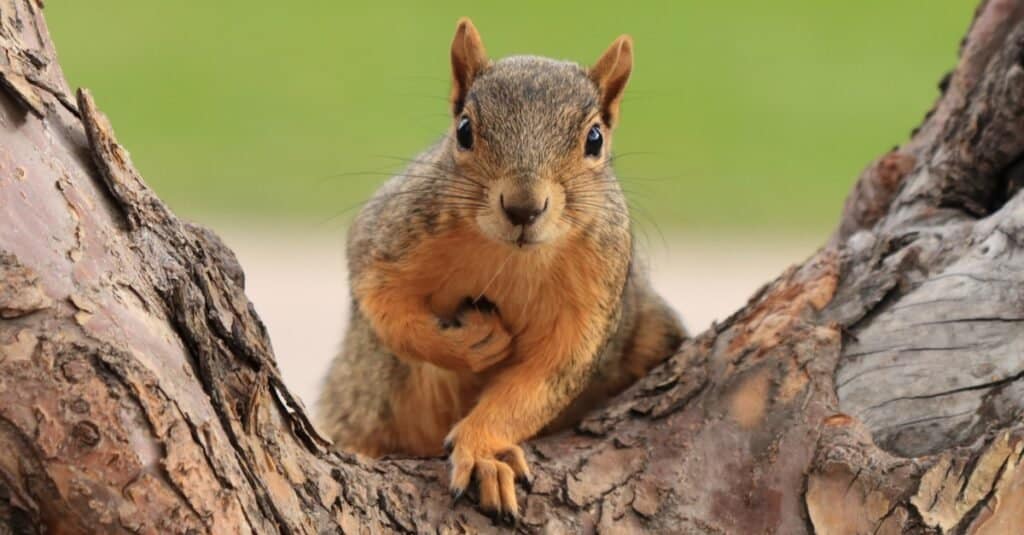
©Vaclav Matous/Shutterstock.com
Behavior
Most rodents are social and tend to live in family groups. The prairie dog lives in what can be called towns, and the chinchilla lives in herds. Family groups are often parents and their children. Children from previous broods sometimes live with the newest crop of children. Brown rats are made up of colonies of females and their babies and a male that defends their territory. Some rodent societies are matriarchal, with females and their young living together and males being ejected when they reach or approach sexual maturity. This happens with ground squirrels.
The most extreme form of rodent behavior can be seen in the naked mole rat. These animals behave more like eusocial insects than mammals. The colony is dominated by a queen, who is the only female allowed to reproduce. The other mole rats are there to take care of the colony and the young.
Rodents also scent marks through urine and feces and glandular secretions. Though this might be repellent to humans, these substances allow the rodent to tell friends and family from strangers and enemies. Many rodents also use a variety of vocalizations, from the house mouse’s trademark squeak to the marmot’s whistles to squirrels’ barks to vocalizations that the human ear can’t hear.
Habitat
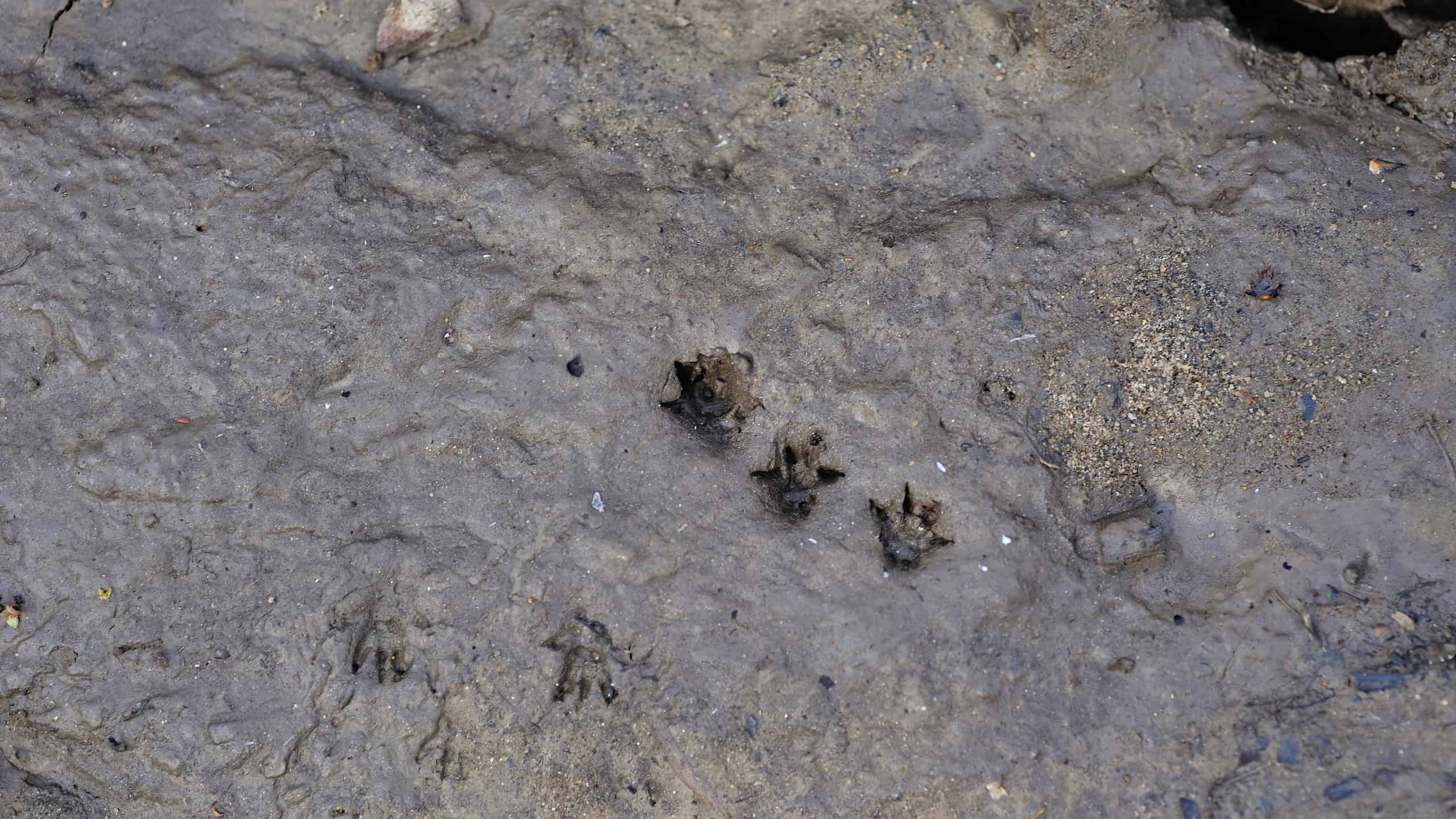
Small rodent tracks in mud
©daksun/Shutterstock.com
There are very few places on earth where at least one species of rodent doesn’t live. Brown rats famously live in the subways of New York City. Rodents are probably not found in Antarctica, but they managed to migrate to Oceania without the help of humans.
Rodents such as flying squirrels live in the trees. Prairie dogs, ground squirrels, tuco-tucos, and mole rats live largely underground. Beavers and nutria are semi-aquatic. Rodents live in the cold tundra, in hot, dry deserts, on farms, in houses, and in office buildings. They live in the mountains and in rainforests and savannas. In some places they are pests and much effort is made to control their populations.
Diet
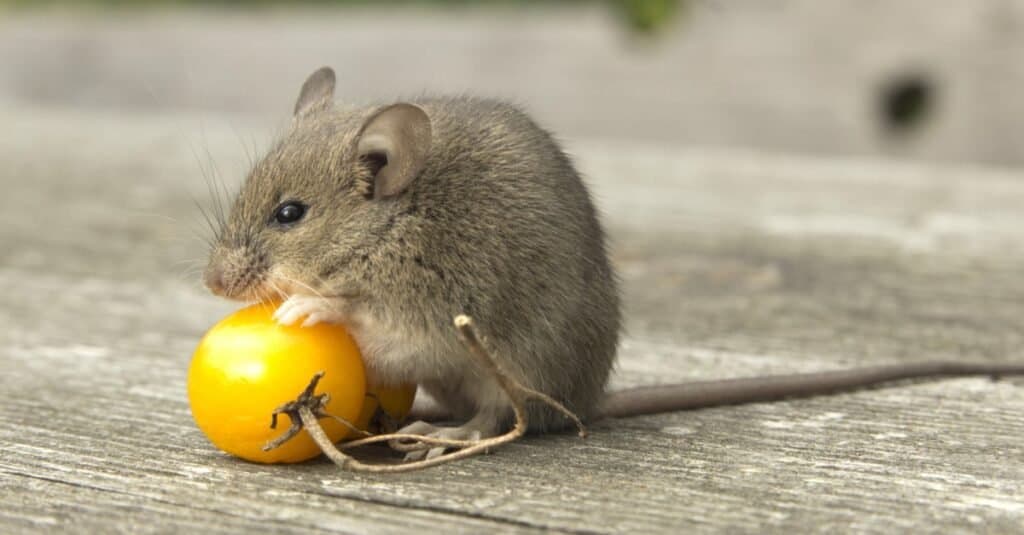
One of the smallest rodents, a little mouse, will chew almost anything.
©dr OX/Shutterstock.com
Though most rodents are herbivores, the order can be considered omnivorous since many species eat other animals. Indeed, as most people who have a mouse problem know, rodents are compelled to at least chew through just about anything. Though rodents lack the canine teeth of most carnivores, some of them are adept at hunting. Rats are believed to be responsible for the extinction of several species of reptiles, birds, and other mammals. They may be even worse than cats when it comes to this sort of predation. Indeed, sewer rats have been known to practice cannibalism and attack human babies.
Even rodents that eat plant matter will sometimes dine on insects or worms. Others eat birds, eggs, fish, and other small aquatic animals and chew on tree bark. Although not frequently, some rodents like mice, rats, and chipmunks will eat boxelder bugs.
Predators And Threats
Humans have always preyed on these animals. They have used and still use them for food and clothing. Indeed, the beaver was nearly extirpated because of its soft, water-repellent fur. Hunting the nutria not only provides fur and dog kibble but controls its somewhat out-of-control numbers. The docile capybara is raised for its meat and its hide, which is turned into leather.
In other cases, the animals are hunted because people find it repellant and/or a disease vector or disease reservoir. This is true of several species of rats and mice. Rats, for example, are blamed for bringing the fleas to Europe that led to the Black Death, and rats and mice still spread diseases.
Rodents also have a wealth of natural predators. Jaguars and caimans prey on capybaras and agoutis. Mice are a favorite meal of owls and other birds of prey. Rodents also eat smaller and weaker rodents including babies of their own species.
Reproduction And Life Cycle
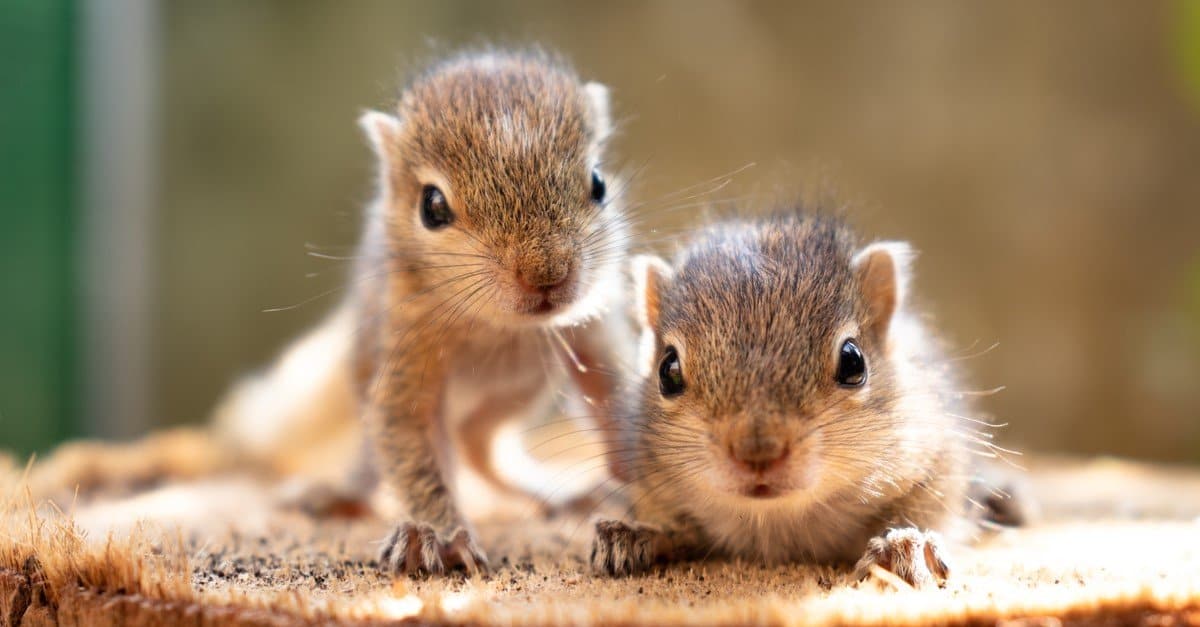
Some babies are born naked and helpless.
©Nilanka Sampath/Shutterstock.com
There are probably as many reproductive strategies as there are genera of rodents. Some are monogamous, and both parents help raise the young. Others are monogamous because the male just can’t find another female to mate with. In some species, males defend a territory that encloses the territories of a number of females. In other species, males and females mate with whoever is available, sometimes to the point where a litter of pups can have several fathers. In a naked mole rat colony, only the queen is allowed to mate, and she has at least three consorts.
Some babies are born naked and helpless while others are born with fur and even ready to eat solid food, as is the case with porcupines. However they emerge, most mothers are attentive to their pups. In cases such as black-tailed prairie dogs, mothers are attentive to other pups as well, as the babies are raised communally.
The lifespan of these animals ranges from six months to a year for the Muller’s Giant Sunda Rat and 32 years for the naked mole rat.
Population
Billions of these animals live around the world. China alone has over 2 billion rats, and in 2019 the rat population just in New York City was 2 million. Despite this, 168 species are considered endangered. This becomes especially urgent when you consider that most rodent genera have just one species. Endangered species include the brown hairy dwarf porcupine, Reig’s tuco-tuco, the Pacific degu, the heavenly hill rat, and the Dinagat bushy-tailed cloud rat, which has probably already gone extinct.
View all 114 animals that start with RRodents FAQs (Frequently Asked Questions)
Are rodents carnivores, herbivores, or omnivores?
Rodents are omnivores. They will eat both plant and animal material.
What is a rodent?
Rodents are mammals that have teeth and powerful jaws that are made for gnawing. The incisor teeth are long, continuously grow, and have deep, open roots. Most rodents are gregarious, though a few, like the groundhog and fat dormouse, live alone most of the time. They are usually small, furry animals with sharp little claws and long tails. Exceptions include the naked mole rat, which has no fur and a short tail, and the capybara. This animal grows to 4 feet in length, has claws that are more like hooves, and has a vestigial tail.
What is the largest rodent in the world?
The largest rodent in the world is the capybara.
What animals are called rodents?
Over 2000 kinds of animals are called rodents. Among them are:
- Porcupines
- Rats
- Mice
- Gerbils
- Voles
- Agoutis
- Maras
- Hutias
- Viscachas
- Chinchillas
- Pacas
- Nutrias
- Degus
- Squirrels
- Chipmunks
Why is a rabbit not a rodent?
Interestingly, scientists used to think that rabbits and hares were indeed rodents, but their dentition is not the same as a rodent’s. Though their incisors also keep growing, rabbits have two pairs in their upper jaw instead of the rodent’s one pair. Rabbits and hares are now considered lagomorphs instead of rodents. Yet, lagomorphs and rodents have a fairly recent common ancestor and are both parts of a clade called Glires.
Is a raccoon a rodent?
A raccoon isn’t a rodent. It’s a member of the Procyonidae family.
Is a mouse a rodent?
A mouse is a rodent.
What do rodents eat?
Rodents are largely herbivores and will eat the leaves, flowers, seeds, nuts, stems, roots, and bark of plants. Omnivorous rodents eat insects, worms, arachnids, and eggs. Rats and mice who live around humans eat refuse and much of what humans eat, including pizza.
Thank you for reading! Have some feedback for us? Contact the AZ Animals editorial team.
Sources
- Vox / Accessed July 27, 2021
- San Diego Zoo / Accessed July 27, 2021
- Zoo Portraits / Accessed July 27, 2021
- SAREM / Accessed July 27, 2021
- Animal Diversity Web / Accessed July 27, 2021
- Wikipedia / Accessed July 27, 2021
- Nature / Accessed July 27, 2021
- World Atlas / Accessed July 27, 2021

